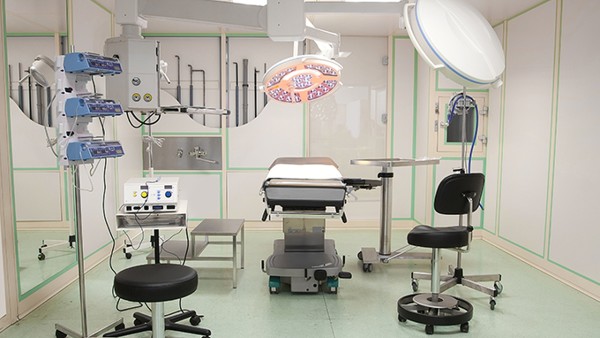What are the Symptoms and Treatment of Gout?

What is Gout?
Gout is a complex form of inflammatory arthritis that occurs when uric acid crystals accumulate in the joints, causing severe pain, swelling, and inflammation. Uric acid is a waste product that forms when the body breaks down purines, which are substances found in certain foods and tissues. Normally, uric acid dissolves in the blood and is excreted through the kidneys in urine. However, when uric acid levels become too high (hyperuricemia), it can crystallize and deposit in the joints, leading to gout attacks.
Symptoms of Gout
The most common symptom of gout is sudden, severe pain in the big toe joint, although it can also affect other joints, such as the knees, ankles, wrists, and fingers. The pain is often described as agonizing, throbbing, or burning and can last for several days or even weeks.
Other symptoms of gout include:
Swelling and redness in the affected joint
Stiffness and limited range of motion
Heat and tenderness to the touch
Fever and chills
Fatigue and malaise
Causes of Gout
Gout is primarily caused by high levels of uric acid in the blood (hyperuricemia). This can occur due to several factors, including:
Diet: Consuming foods high in purines, such as red meat, organ meats, shellfish, and certain types of fish, can increase uric acid production.
Obesity: Excess weight can contribute to higher uric acid levels.
Genetics: Some people are genetically predisposed to gout due to impaired uric acid metabolism.
Medical Conditions: Certain medical conditions, such as kidney disease, diabetes, and hypertension, can affect uric acid levels.
Medications: Some medications, including diuretics, aspirin, and certain blood thinners, can increase uric acid levels.
Risk Factors for Gout
The following factors increase the risk of developing gout:
Age: Men over 40 and women after menopause are at higher risk.
Family history of gout
Obesity
High blood pressure
High cholesterol
Diabetes
Kidney disease
Alcohol consumption
Certain medications
Diagnosis of Gout
Diagnosing gout typically involves a physical examination and a few diagnostic tests:
Joint Fluid Analysis: A needle is inserted into the affected joint to withdraw fluid, which is then examined under a microscope for the presence of uric acid crystals.
Blood Test: A blood test can measure uric acid levels and rule out other conditions.
X-Rays: X-rays can show joint damage and help exclude other conditions.
Treatment of Gout
The primary goal of gout treatment is to relieve pain and inflammation during acute attacks and prevent future flares. Treatment options may include:
Medications
Nonsteroidal Anti-Inflammatory Drugs (NSAIDs): NSAIDs, such as ibuprofen or naproxen, can reduce pain and inflammation.
Colchicine: Colchicine is a specific medication used to treat gout attacks and prevent future flares.
Corticosteroids: Corticosteroids, such as prednisone, can effectively reduce inflammation and pain.
Uric Acid-Lowering Medications: These medications, such as allopurinol or febuxostat, can reduce uric acid production or promote its excretion.
Lifestyle Modifications
Diet: Limiting purine intake by reducing the consumption of red meat, organ meats, shellfish, and certain types of fish can help lower uric acid levels.
Weight Loss: Losing weight can help reduce uric acid production.
Alcohol: Alcohol consumption can increase uric acid levels and trigger gout attacks.
Hydration: Drinking plenty of fluids, especially water, helps flush out uric acid and prevent crystallization.
Other Therapies
Ice: Applying ice packs to the affected joint can reduce pain and inflammation.
Heat: Applying heat to the affected joint can help improve circulation and relieve pain.
Massage: Gentle massage can help improve circulation and reduce stiffness.
Prevention of Gout
Preventing gout involves controlling uric acid levels and avoiding triggers:
Healthy Diet: Limiting purine intake and maintaining a healthy weight can help prevent gout.
Regular Exercise: Regular physical activity can help keep weight in check and improve overall health.
Moderate Alcohol Consumption: Limiting alcohol intake can reduce the risk of gout attacks.
Stay Hydrated: Drinking plenty of fluids helps flush out uric acid and prevent crystallization.
Medications: For individuals with high uric acid levels or recurrent gout attacks, preventive medications may be prescribed.
Conclusion
Gout is a painful and debilitating form of inflammatory arthritis caused by the accumulation of uric acid crystals in the joints. Understanding the symptoms, causes, risk factors, and treatment options is crucial for managing and preventing gout effectively. By adhering to medical advice, making healthy lifestyle choices, and taking preventive measures, individuals can reduce the impact of gout and improve their overall well-being.
The above is all the content that the editor wants to share with you. I sincerely hope that these contents can bring some help to your life and health, and I also wish that your life will be happier and happier.
Tags: #the #symptoms #what















